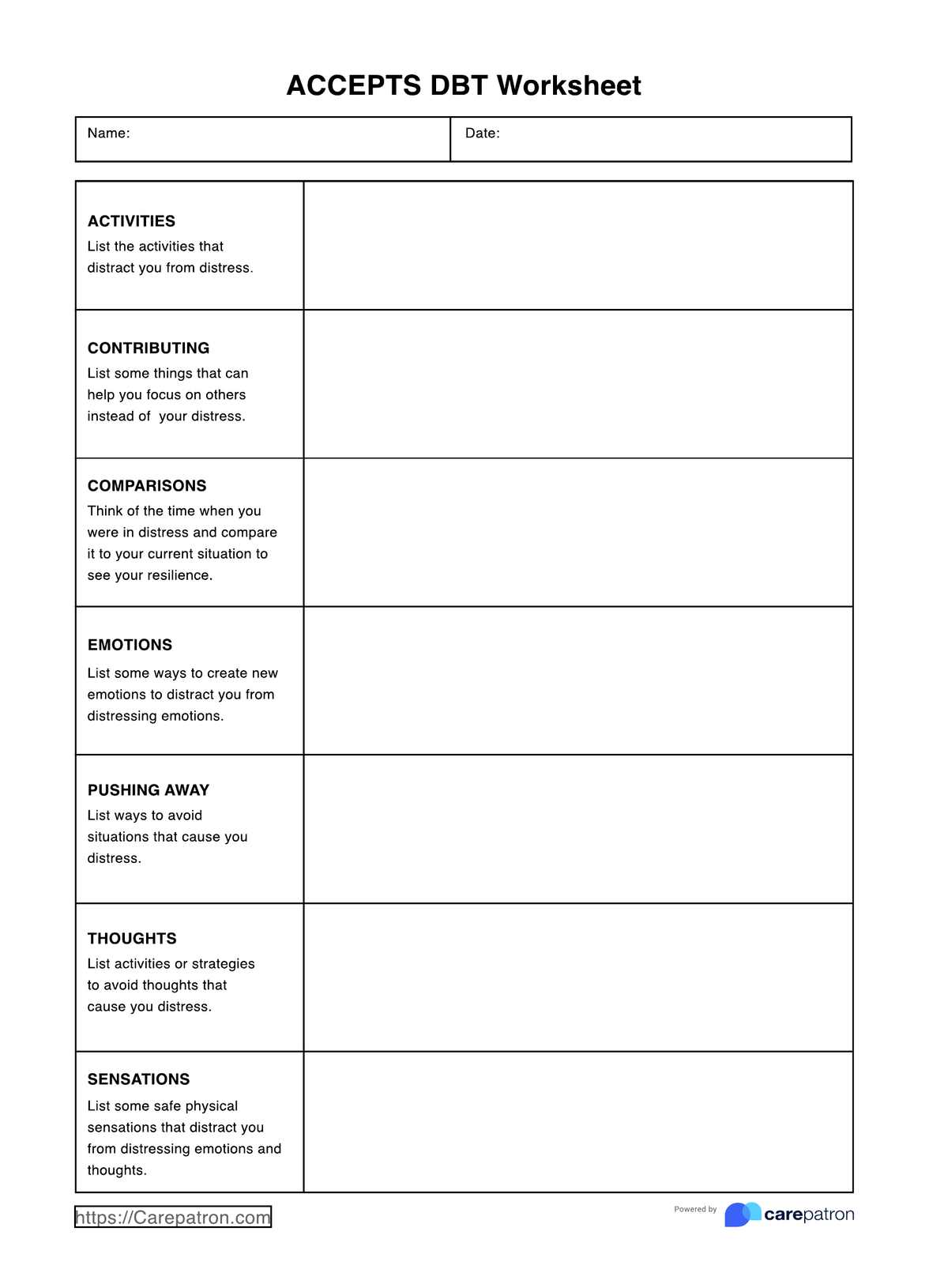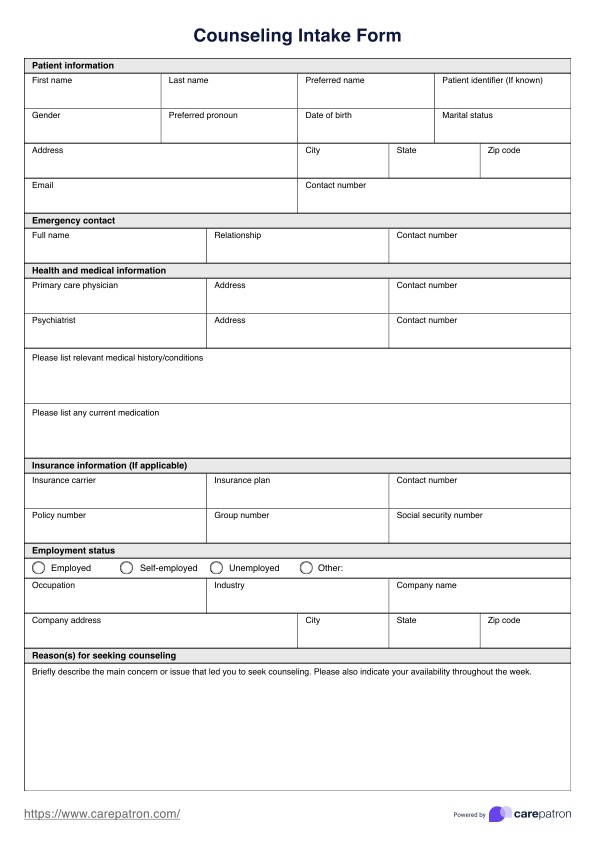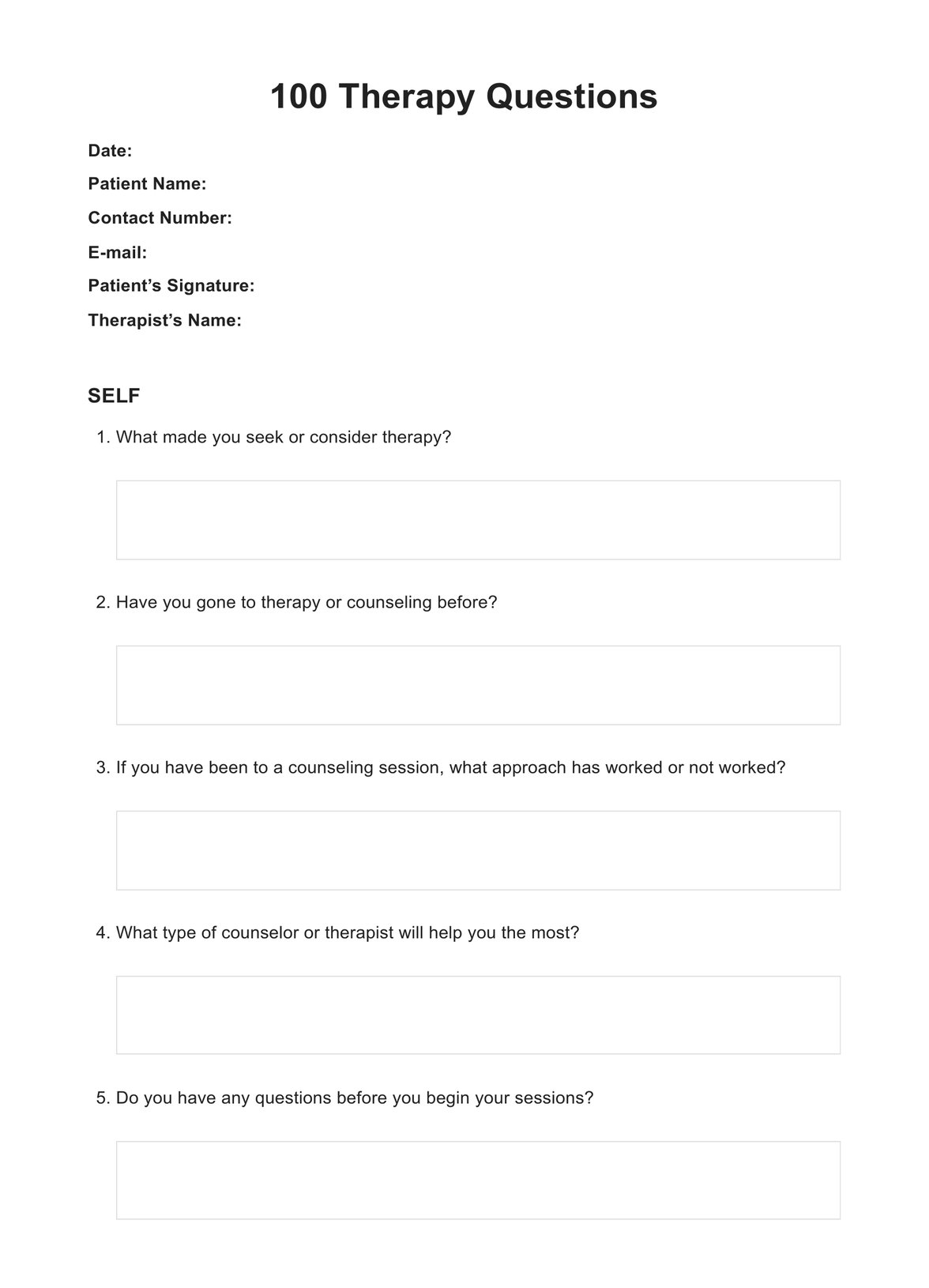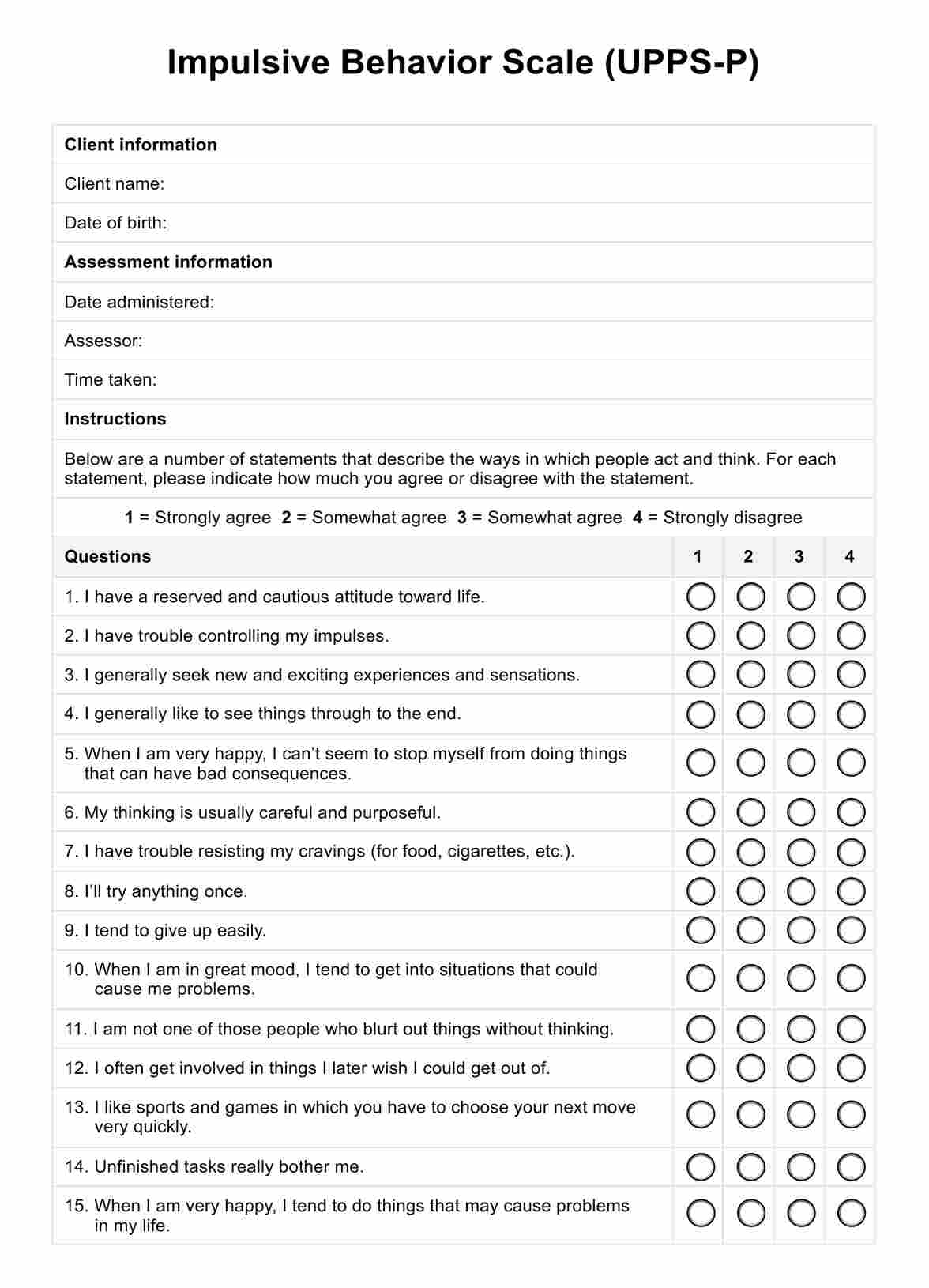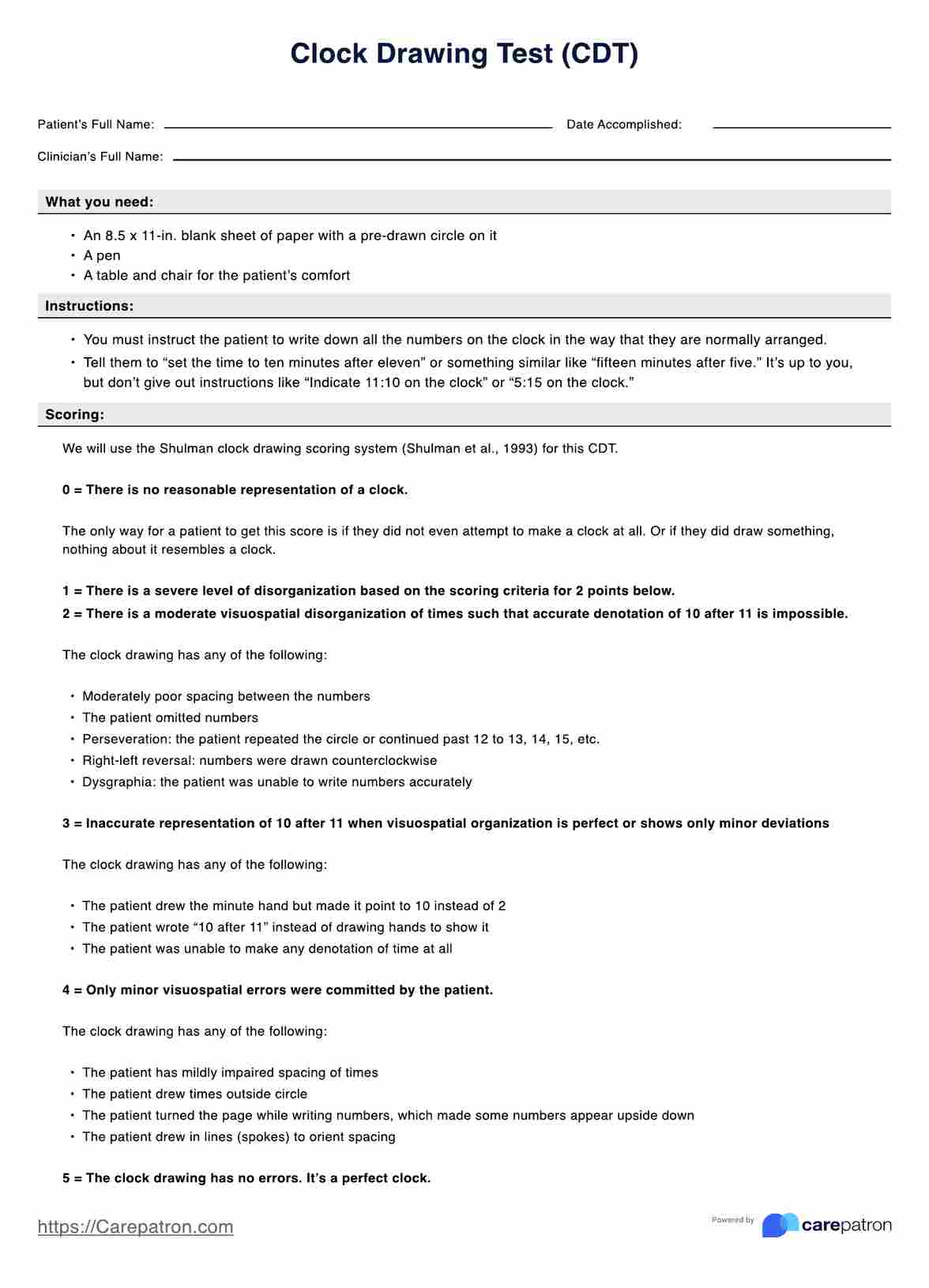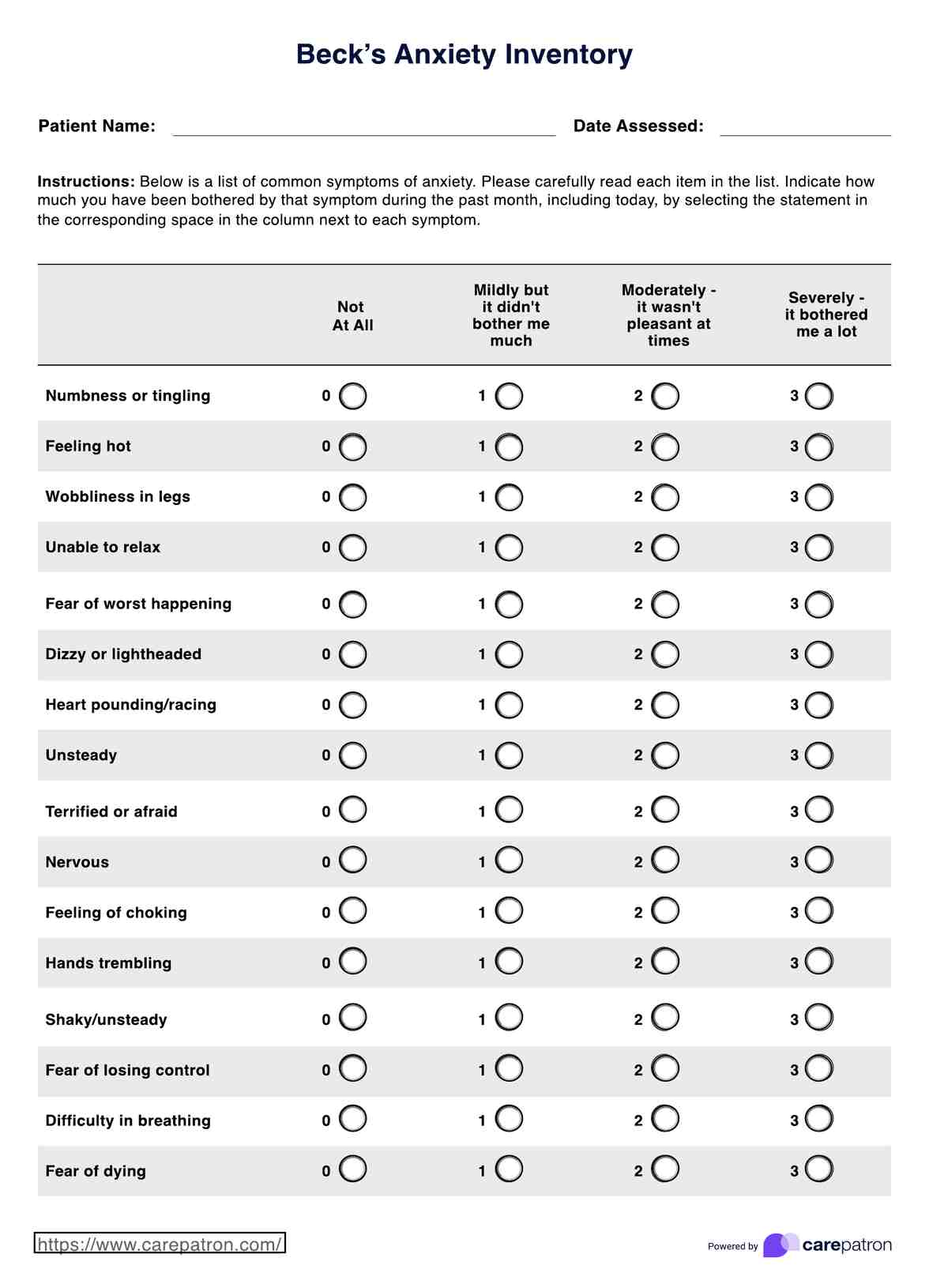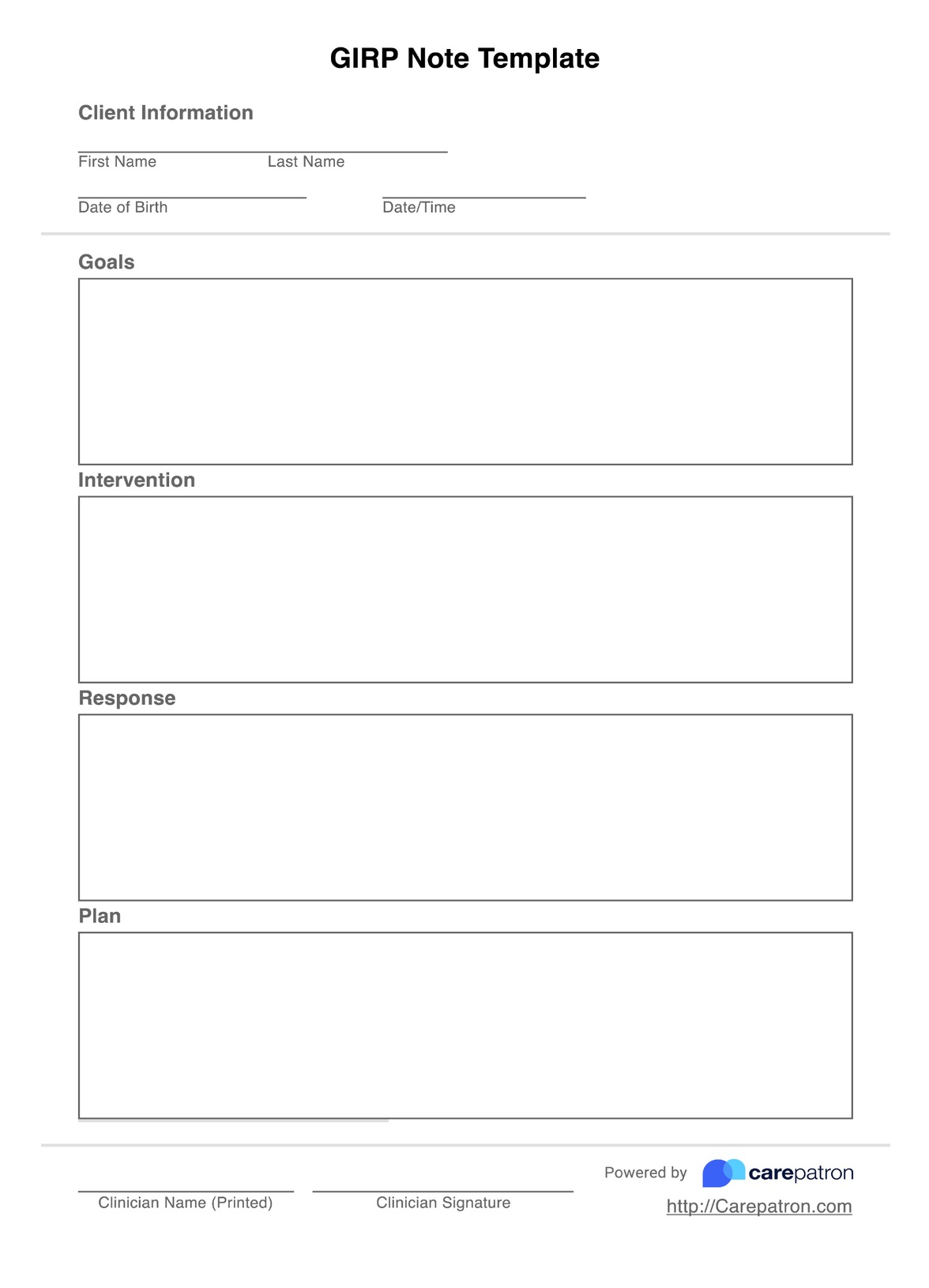List Of Feelings
Access a List of Feelings and examples available for free. Download to help someone enhance emotional understanding.


What is a List Of Feelings?
Emotions are not only integral to your being, but they also possess a remarkable complexity that can leave you in a state of bewilderment. They tend to become tangled, convoluted, and sometimes even perplexing.
However, understanding how to precisely label your emotions and engage in open discussions about them—both with yourself and others—is an invaluable component of fostering emotional health and resilience.
A template can be immensely valuable in a professional setting when it comes to identifying and expressing emotions. In such environments, where clear communication and understanding are crucial, having a feelings list can facilitate effective emotional expression and help foster healthier colleague relationships.
There are many different emotions that people experience, both positive and negative. A list of feelings is a collection of words that describe different emotional states. It can help you understand your emotions, build empathy for others, and cope with difficult emotions.
When you're overwhelmed by difficult emotions, a list of feelings can help you break them down into smaller, more manageable pieces. This can make coping with your emotions easier and finding healthy ways to express them.
If you're looking for other relevant resources, feel free to watch this video:
List Of Feelings Template
List Of Feelings Example
How does it work?
Carepatron provides a comprehensive and user-friendly List of Feelings template designed to assist individuals in various settings, including self-reflection, therapy sessions, and educational contexts. Here's a breakdown of how the List of Feelings template works:
Step one: Introduce the Template
The therapist, counselor, or facilitator introduces the Printable List Of Feelings template to the individual, explaining its purpose and how it can facilitate the identification and expression of emotions.
Step two: Reflect on Current Emotional State
The individual takes a moment to contemplate their present emotional state, having familiarized themselves with the List of Feelings template. They can refer to the comprehensive range of emotions provided in the template to help them pinpoint and describe their feelings accurately.
Step three: Engage in Reflection and Resonance
Once the individual has identified their emotions, they engage in a period of reflection. They delve deeper into their emotional experiences, examining the nuances and intricacies of their feelings.
Step four: Select Appropriate Emotions
Utilizing the List of Feelings template, the individual selects the emotions that most precisely capture and represent their feelings. The template provides diverse emotions, enabling individuals to choose one or multiple emotions that encapsulate the complexity and depth of their emotional experience.
Step five: Express Emotions and Engage in Discussion
The individual expresses their emotions to the therapist, counselor, or facilitator. They can convey their feelings verbally by articulating the chosen emotions or visually by indicating the corresponding emotions on the provided template.
When would you use this Template?
Here are some situations where this Free List of Feelings Template can be effectively utilized:
Initiating discussions with patients
Therapists and counselors can use the template to encourage patients to express and process their emotions. It is a valuable discussion starter and helps track emotional growth over time.
Fostering a nurturing classroom environment
Teachers and school staff can utilize the List of Feelings Template to create a safe space for students to discuss their emotions. It can be incorporated into classroom activities or counseling sessions, promoting open and honest communication.
Monitoring patient progress in counseling
In both individual and group settings, mental health practitioners can use the List of Feelings Template to monitor patients' emotional development. It aids in crisis intervention and assists patients in understanding and managing their feelings more effectively.
Enhancing self-awareness
The List of Feelings Template is a tool for personal introspection and self-understanding. Anyone can benefit from using it to gain awareness of their mental and emotional state. It promotes stress reduction, improved communication, and overall emotional well-being.
Benefits
Our Free List of Feelings Template offers numerous advantages for therapists and individuals seeking to understand and regulate their emotions. Here are some key benefits:
Convenient digital format
The template is easily accessible digitally, eliminating the need for physical copies. It can be accessed and updated across various devices, making it convenient for therapists and clients.
User-friendly design
The List of Feelings Template is designed for simplicity and ease of use. Both therapists and clients can navigate and understand it effortlessly.
Customizable to individual needs
The template can be customized to suit specific requirements and preferences. Additional sections or questions can be added to address particular emotions or focus areas, allowing for a personalized approach.
Encourages progress and motivation
Individuals can observe and track their emotional patterns over time using the List of Feelings Template. Witnessing positive changes can foster motivation and inspire continued efforts toward emotional well-being.
It is a powerful tool for therapists and individuals seeking to better understand their emotions and foster personal growth and emotional well-being.
Research & Evidence
Extensive research strongly emphasizes the significance of identifying emotions. For instance, studies have revealed that individuals who excel in recognizing their emotions tend to have healthier relationships and greater professional success. Research has indicated that individuals proficient in managing their emotions are less prone to anxiety and depression.
An influential figure in the development of the List of Feelings is psychologist Robert Plutchik. In the 1980s, Plutchik devised an emotive wheel delineating eight fundamental emotions: happiness, sadness, anger, fear, surprise, disgust, anticipation, and trust.
Plutchik's emotive wheel has left a lasting impact on psychology and has been widely employed in numerous research endeavors.
The accumulating body of research provides substantial support for utilizing the List of Feelings. For example, studies have demonstrated that individuals with a heightened ability to identify their emotions are more likely to foster healthy relationships and achieve career success. Research has indicated that individuals adept at managing their emotions are less susceptible to anxiety and depression.
References
Brackett, M. A., Rivers, S. E., & Salovey, P. (2016). Emotional intelligence: Implications for personal, social, academic, and workplace success. Social and Personality Psychology Compass, 10(11), 620-636.
Petrides, K. V., & Furnham, A. (2000). The role of trait emotional intelligence in academic performance and satisfaction with life. Personality and Individual Differences, 29(2), 311-320.
Commonly asked questions
The List of Feelings is a versatile tool used by various professionals, including therapists, educators, personal development coaches, and individuals seeking self-improvement. It enhances emotional understanding and promotes healthier emotional management.
The List of Feelings can be used in therapy to help clients identify emotions, in education to teach students about emotions and coping strategies, and in personal development to improve emotional intelligence and well-being.
Carepatron's List of Feelings template is a comprehensive and user-friendly tool for self-reflection, therapy, and education. It involves introducing the template, reflecting on current emotions, selecting appropriate emotions from the comprehensive range provided, expressing them to the therapist or facilitator, and engaging in meaningful discussions.
This template empowers individuals to identify and explore their emotions accurately, promoting personal growth and emotional well-being.


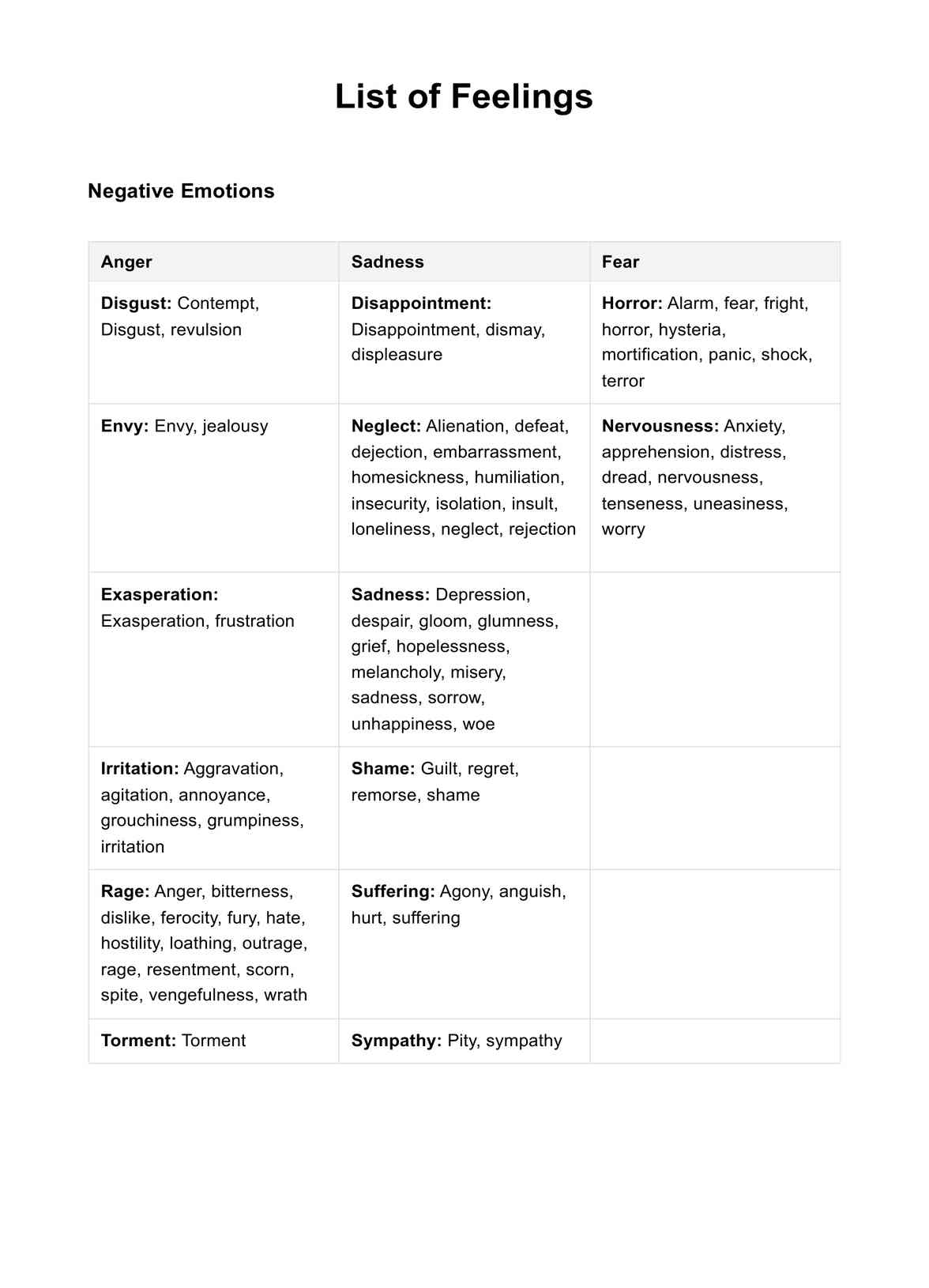
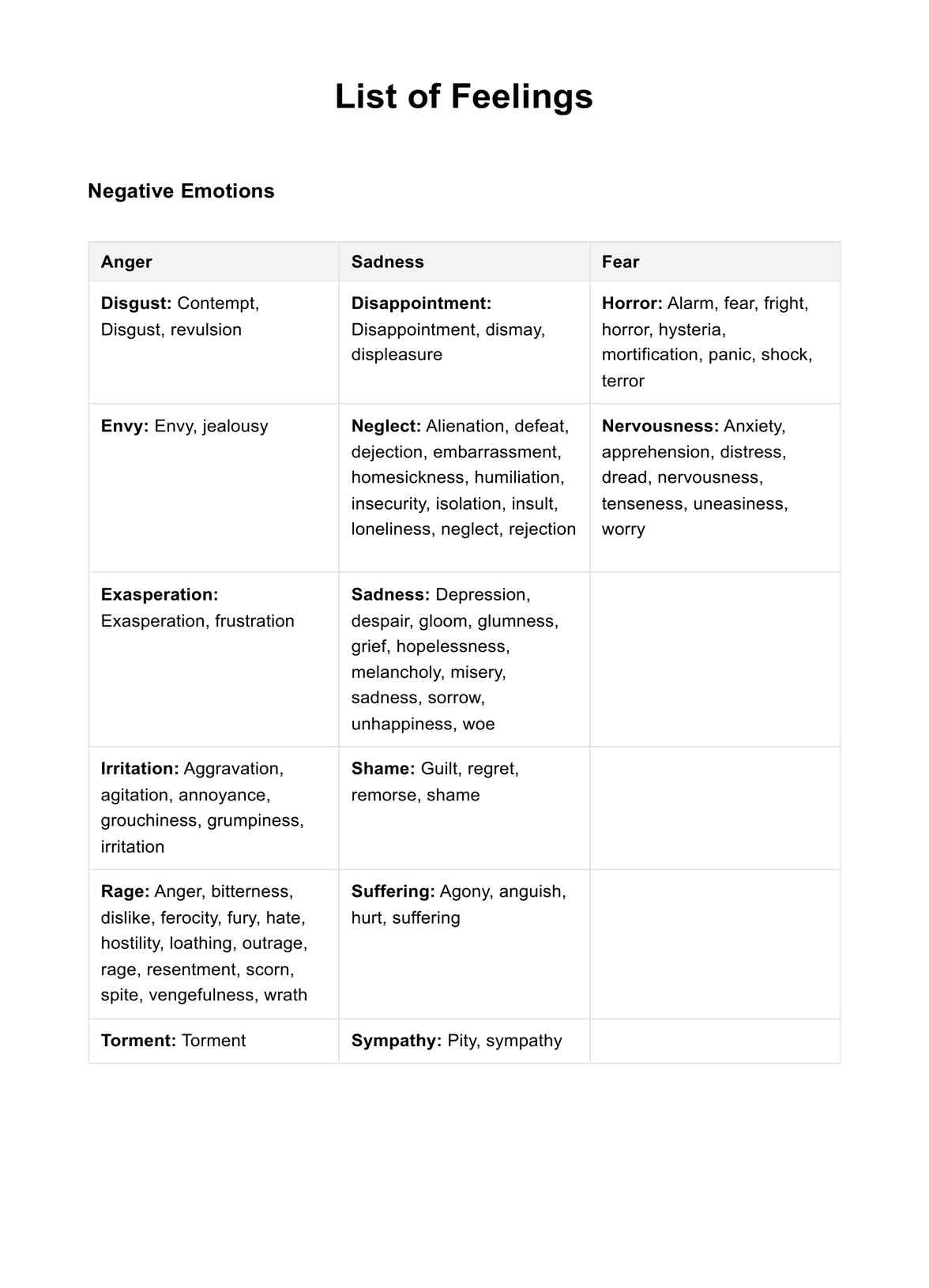

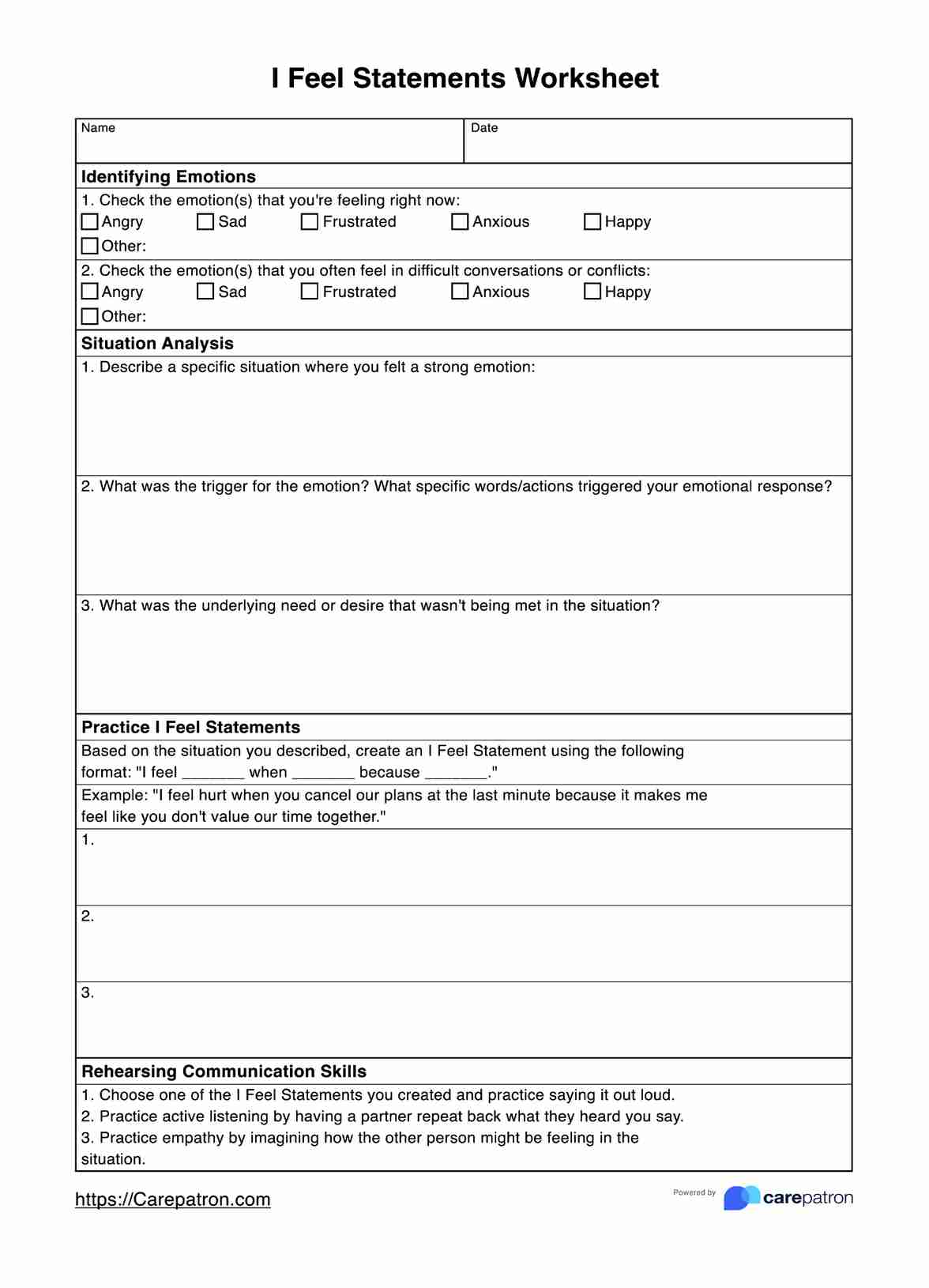














-template.jpg)





















































































